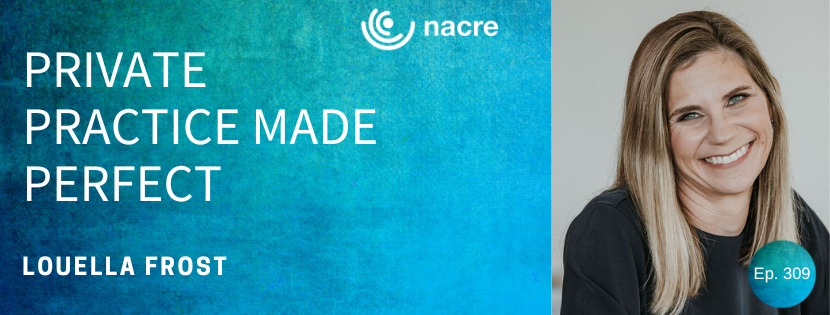Lately, I’ve been talking with a few different business owners about the onboarding process they use with new recruits.
What I’ve found is that a lot of businesses either don’t have a solid process or they have one but it feels rushed. As a result, their recruits get off to a bumpy start and the company misses an opportunity to onboard their new team member properly.
I think it’s time to do onboarding differently. Here’s what I believe…
The longer, slower, and more in-depth the new recruit onboarding process is, the better it is for everybody.
So let’s talk a bit more about that.
Subscribe here: Apple Podcast, Stitcher, Subscribe on Android, Player.fm, RSS
Why it’s worth taking another look at your onboarding
Right now, our industry is facing a pretty big issue – recruitment challenges. We’ve heard it described as a clinician’s market, a thin market, and an employee’s market. And you can expect that to continue to intensify as we get closer to full NDIS rollout. Either way, candidates and potential employees have a lot of choice right now. This means you need to have a point of difference in your company that will attract and retain good staff.
A comprehensive onboarding process will help you and your company stand out to candidates when they’re selecting where they want to work. And once they’re hired, taking them through a complete onboarding process will help them feel invested in your company and want to stay on your team for longer.
So if you want to build the best possible team and reduce the amount of time (and money) you spend on recruiting… a solid onboarding process is one of the best ways to do it!
15 tips to level up your staff onboarding process
Ready to improve your onboarding process for new recruits? I’ve put together 15 tips and features of a good, strong onboarding process. Follow these tips and you’ll take your process from basic to advanced so your new team members can start work more confidently, while retaining more information, improving compliance, and encouraging a better work culture.
1. Slow it down
If you only take away one tip, let it be this! I want you to slow your onboarding process down so that’s it’s gently paced, calm, organised, and preplanned. Funnily enough – these are all words that rarely go with those first couple of weeks of a new job, right?
But one of the most important features of a good, strong onboarding process is that it’s slower paced and a carefully structured program that continues over a set period of time.
The slower pace helps keep the anxiety and fight/flight mechanism at bay at a time that might otherwise cause stress and overwhelm for your new recruits in a new environment. And because anxiety actively reduces working memory, it works against your new employees who need to learn and remember lots of new information.
How long should your onboarding take, exactly? I’d suggest somewhere between 10-20 weeks, but I know some organisations that do 30-40 weeks. The timeframe will depend on the topics you decide to cover.
So instead of getting lumped with everything at once (or potentially missing crucial details), everything is covered, and there’s a time and place for it all. Your new team member can enjoy a more calm, organised process, remember more information, and do it at a more relaxed pace. It’s just better for everyone.
2. Structure your program carefully
Part of pacing your onboarding process involves the structure itself. I’ve heard some horror stories about unstructured onboarding… things like:
- Having a new recruit shadow another employee for a few days
- Getting them to look through policies, procedures, and templates
- Running them through assessments
- Just handing over a C drive with “everything” on it
- And worst of all – a full caseload in the first week or even the first day!
A well thought out, structured process helps avoid overwhelming your recruit with too much information at once and jobs they’re not ready to take on. And by structure, I mean:
- Scheduled topics each week
- Scheduled meetings
- Scheduled activities
- Checklists (you have my full permission to go crazy on the checklists!)
- Sequencing everything logically
- Starting with the basics
- Ensuring the more advanced stuff (like report templates) happens further down the track
3. Share your values
One of your top priorities and very first thing you do with a new recruit is onboard them into your values. Here’s what you might talk about:
- The company’s goals and vision
- The kind of culture you’re building and what you care about most
- Background on you and your team
- Organisational structure
- Any relevant people and places they should know about
- Any referral partnerships and how they work
And even just basics like where things are in the building. Sure, it’s not a value – but it’s something your recruit should be introduced to right from the start so they can find their bearings. The idea is that you help your new employee know where they sit – both physically and figuratively – in the business.
4. Communication systems and expectations
Another topic that should come up early on in the process (say, week one or two) is your communication systems. You should cover questions and topics like:
- What are acceptable modes of communication?
- Who reports to who?
- What are the expectations around communication?
- Who do you talk to when you need help or have a question?
- Where should you direct any feedback or issues?
- Guidelines on communicating respectfully and inclusively (including language around disability and differences)
5. Neatly document everything
Documentation applies to two main areas:
First of all, in your day to day business processes themselves. Make sure you have all the steps and how-tos written down or recorded somehow, not just in your head. That way, your new recruits will have really clear documentation about what’s expected, what’s coming up, what’s new, and where to go to find things. It doesn’t have to be a massive employee handbook, but you should have all the basics recorded somewhere and make them available to new team members.
And secondly, documenting the onboarding itself and recording what steps your new team member has and hasn’t completed. We kind of know that we have to do this, but sometimes in the rush and excitement of getting a new team member, the onboarding can be a little haphazard. So instead of just saying there’s a checklist here, there’s a pile of files there, and there’s a sheet on a cupboard somewhere else… have it all neatly arranged in a sequence so they can work their way through and check things off as they go along.
6. Drip feed your onboarding
We’ve already touched on this, but I really want to drive the point home. So think about how you can drip feed your onboarding process. Be strategic about how you can drop those gems of knowledge on your new recruits across a longer period of time and also support it with documents that are friendly and helpful.
That way, you’ll reduce the overwhelm, increase engagement, and improve the chances of your new employees actually remembering and taking action on what they’ve been told.
7. Multimedia onboarding
Another tip is to rethink delivering your whole onboarding and training via Word documents. Think about different multimedia you can use for your onboarding. Things like video, screenshots, audio, and more – and accompany them with text, if you like. And ideally it all sits in some really elegant online architecture that you’ve designed. That way, it’s sequenced logically, easy to navigate, and engaging enough to make your new recruits want to click through, listen, watch, and reflect on.
8. Create opportunities for reflection and feedback
Another crucial feature of a strong onboarding process is reflection. This should come from your perspective as the business owner, but also your colleagues and new recruits. So throughout the process, ask questions like:
- Is there enough time and opportunities built into the onboarding sequence where people can get together and check in?
- How is the process going?
- Is the information making sense and in a logical order?
- What are you able to apply already?
- What’s working?
- What isn’t?
Evaluating as you go along is ideal because you can reflect and adjust on small details, more frequently, rather than waiting for months to see how it went. Of course, a final review at the end is important too, but we’ll get to that…
9. Involve your wider team in onboarding
While you as the business owner need to take care of some parts of the onboarding process, it’s ideal if your team members can participate as well. This will help with boosting your team culture, strengthening team connections, and encouraging work-based friendships.
And it’s not just your clinical team – your admin team (whether they’re in-office or virtual) should play an important role in onboarding and connecting with your new recruits. Each team member will likely have their own topics, interests, and areas of expertise that they can present, discuss, and share – and they’ll probably do a better job than you could do, too.
10. Consider tracking and measurement
Let’s also have a think about how you’re going to measure how well your new recruit is applying this content and information from your onboarding process. I find the best way to do this is to schedule meetings ahead of time (before your new recruit even walks in the door) to cover set topics and evaluate how they’re going.
11. Don’t jump straight to clinical
This tip is extremely important! While some of your onboarding will be clinical (of course), please try to hold back on rushing to the clinical side of things. Lead into it gently and start off by onboarding new team members into your organisational culture, values, and that sort of thing.
12. Questions to ask during the process
Ask questions! This cannot be overstated enough. You want to be open to feedback and keep in the loop with how everything’s going. Here are some questions you can refer to:
- How are you sitting with the values of our business?
- What are you discovering about our communication systems?
- What is it that we’re not doing well enough to support you right now?
- Where are we excelling?
- How is this program working for you?
- How are you finding your way?
As you can see, it’s a good idea to include some big, open-ended questions so there’s plenty of room for feedback. And if you find there’s some stuff that isn’t working (which is normal, by the way), take that on board and keep working towards continuous improvement.
13. Incorporate NDIS compliance measures
Here’s a nice little bonus tip for you. While you take the time to rework, co-design, and deliver a remarkable onboarding sequence, consider how you can incorporate it into your National Disability Insurance Scheme (NDIS) compliance measures. When you’re audited, there are so many boxes you’ll need to have ticked – boxes that are relatively easy to tick with your onboarding process. So while you’re mapping out your 10-20 weeks of onboarding, refer to the National Practice Standards and Quality Indicators, and see what kind of training and inductions you can include from there.
14. Onboard your whole team, not just clinical recruits
Another important tip – your onboarding process shouldn’t just apply to your clinical recruits. It’s just as important to onboard your admin/support team like your bookkeeper, receptionist, or marketing assistant. The goal here is to pull together and lead a tribe of people who are totally magnetised to what you do, why you do it, how you do it – it’s the key to running a more effective business.
15. Review, improve, repeat
Finally, the last thing you should do with this amazing onboarding program you’ve built and implemented is do a full review at the end. So, get your team’s perspective, take on the suggestions of your new recruit, and think about how you can keep evolving your onboarding process to serve your employees and business better in the future.
Ready to tweak your onboarding process?
I’ve given you the tips and steps… now all you need to do it go implement!
You’ll be amazed at what you can improve just by thinking strategically about the content, adding in more discussions and feedback, and really slowing down your onboarding process. You’ll add so much more depth and make it that much more effective for everyone.
Give it a go and let me know what results and differences you notice!







